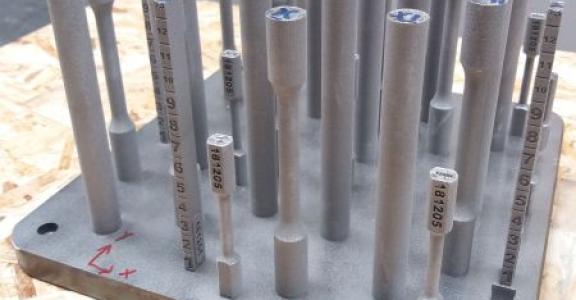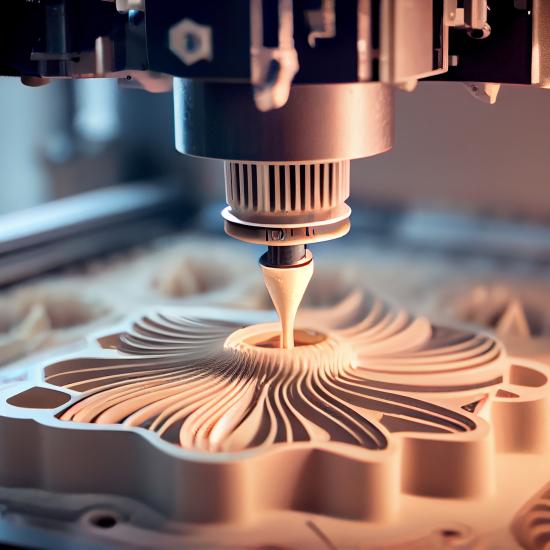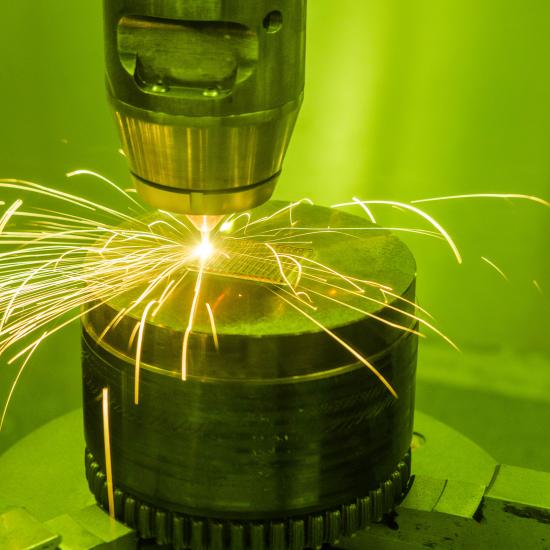Quality assurance in additive manufacturing involves strict control of the raw material and its monitoring throughout the production process.
For additive manufacturing, quality assurance of the raw material, whether in powder, wire or other form, is of the highest importance in order to guarantee the repeatability of successive manufacturing and the properties of the final parts. The specifications of the raw material have to be clearly established by the final user regarding the material properties, and by the manufacturer/supplier specifically regarding the characteristics directly affecting implementation. These can be particulate properties (size, morphology), bulk properties (flow), chemical properties (chemical composition, contamination) and mechanical properties. All this information should be documented by the producer of the material and the parts manufacturer in order to ensure its traceability.
There are several standards published or being developed which set out the requirements and recommendations related to raw materials. They do not give numerical values for the characteristics and properties but rather propose a procedure and draw attention to certain important points. To be sure that the raw material has the required properties and quality, various steps and various tests have to be defined as well as any related documentation.
Firstly, the batch of raw material should be checked on reception. Does it comply with the defined specifications and is it identified for traceability? The manufacturer's material certificate should contain the analysis results of the characteristics which have a critical impact on the planned manufacturing process and which are specific to the batch of powder sold. It enables verification that the material complies with the specifications given in the customer's purchase order. Conformity regarding these specifications should be checked internally or by a third party on a regular basis.
The storage conditions of the accepted batches should follow the supplier's recommendations in terms of control of the ambient conditions such as humidity, temperature and contamination risk, with a clear and precise definition of the acceptable limits for each parameter. If these conditions and limits are not known, they must be analysed and determined.
Before launching manufacture, various operations capable of affecting the quality of the material should be carried out, encoded and monitored, such as for example, in the case of a powder:
- Screening, influenced by various parameters like the dimensions of the screen mesh and the ambient conditions.
- Recycling conditions of the powder, the maximum number of recycles that a batch can undergo, the ratio of the new/recycled powder mixture.
- Procedure provided to achieve a homogeneous mixture and procedure for taking a representative sample.
Each new batch should be tested, as well as each new mixture of virgin and recycled powder. The critical characteristics of the material affecting quality should be monitored and analysed on a regular basis. In order to minimise the number of tests and ensure a high level of homogeneity, it is recommended to mix volumes as big as possible.
Each transportation of material to and from the 3D printer should be done so as to avoid cross contamination, for example using sealed cartridges or containers, the aim being to minimise, or to exclude, any contact with the environment. The material's history should be documented: Amount of material added or removed, number of production cycles undergone by the material and distribution of the batch. Each used batch should be identified uniquely.
By means of various pre-standards projects, Sirris has been actively working on this area in particular for several years. Several items of equipment for analysing and controlling the condition of the raw material are being used to determine the impact of the various characteristics on the process and on the quality of the manufactured parts. All this equipment is also available to industrial actors for specific analyses.
For more information contact our experts:
bruno.verlee@sirris.be
laurent.voets@sirris.be
Sources
ISO/ASTM 52902:2019 Additive manufacturing - Test artefacts - Geometric capability assessment of additive manufacturing systems
ISO/ASTM 52904:2019 Additive manufacturing - Process characteristics and performance - Practice for metal powder bed fusion process to meet critical applications
ISO/ASTM WD 52920-2: Additive manufacturing - Qualification principles - Quality requirements for industrial additive manufacturing sites
ISO/ASTM DIS 52925:2019 Additive manufacturing processes - Laser sintering of polymer parts/laser-based powder bed fusion of polymer parts - Qualification of materials



